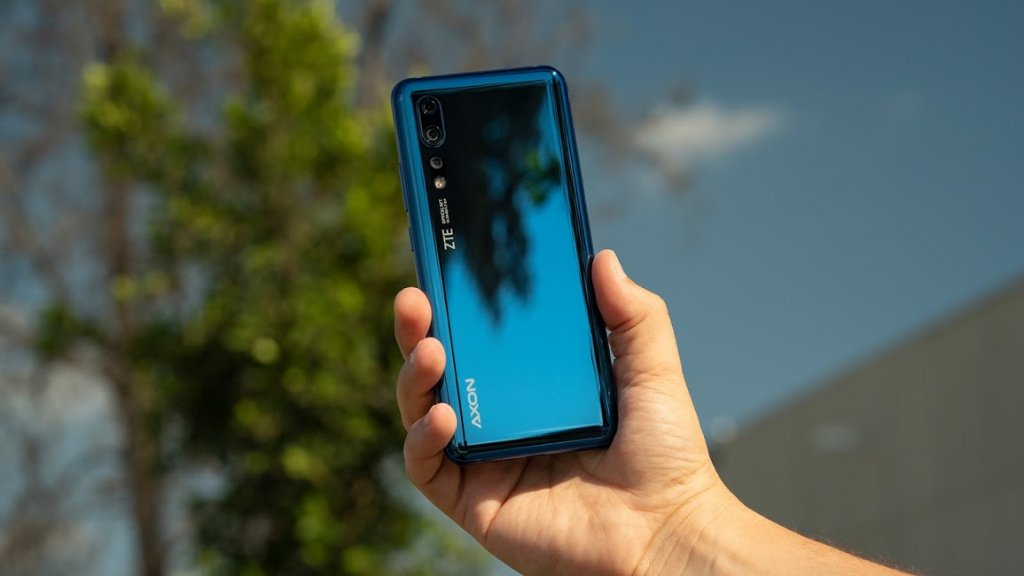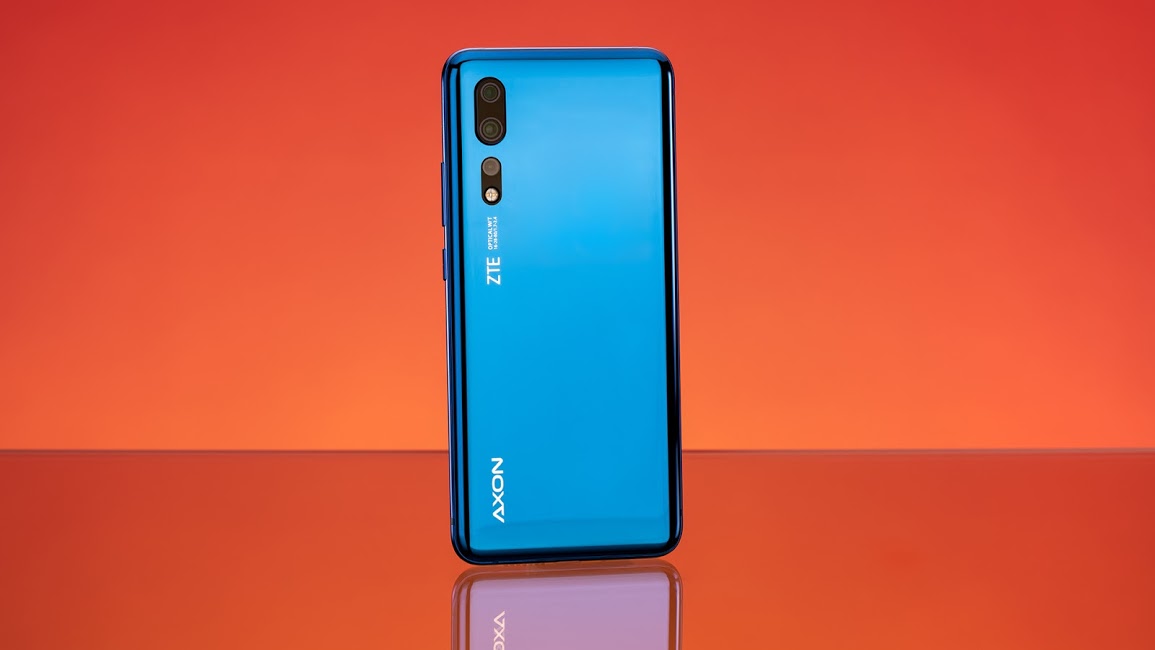
In a world dominated by $1000 cell phones from Samsung and Apple, it’s always refreshing to find a diamond in the rough, especially when that diamond is a whole lot cheaper. ZTE’s new flagship phone, the Axon 10 Pro, is one such diamond, costing just $550 but still boasting top-notch hardware and features. We got our hands on one here in the Newegg Studio, and after spending significant time with it, we’re still just as impressed as we were on day one.
While iPhones have generally always been one of the cell phone market’s largest stakeholders, there was a time before the Samsung Galaxy craze where there was a wide selection of reliable Android smart phones made by manufacturers that flew a bit under the radar. Those phones were often solid, and although they were largely overshadowed in the years that followed by the Samsung Galaxy line, a few of the best options remained available and updated as the years went on. The Axon 10 Pro is one such hidden gem, and if you’re in the market for a new phone, but aren’t interested in diving back into a Galaxy or iPhone, you should give it a good look.
Disclaimer: This article was produced in partnership with ZTE.
Performance
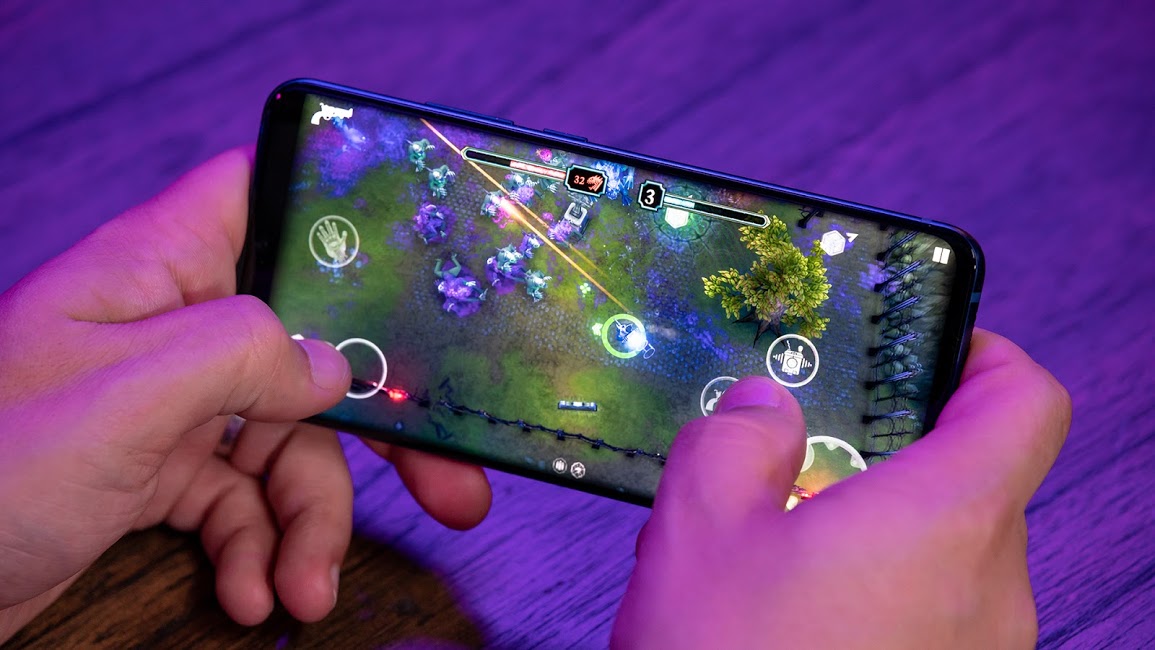 When looking at any phone that isn’t already in the limelight, the first thing we usually do is compare it to the rest of the market. We ran benchmark tests using Geekbench, messed around with all kinds of different situations using the camera, and even played some graphically-intense games on it to try to get a better understanding. We were pleasantly surprised to see and feel how well it held up. It didn’t overheat, either, which we know has been an issue with phones like this in the past.
When looking at any phone that isn’t already in the limelight, the first thing we usually do is compare it to the rest of the market. We ran benchmark tests using Geekbench, messed around with all kinds of different situations using the camera, and even played some graphically-intense games on it to try to get a better understanding. We were pleasantly surprised to see and feel how well it held up. It didn’t overheat, either, which we know has been an issue with phones like this in the past.
Under the hood, the ZTE Axon Pro 10 comes equipped with up to 12GB of RAM and a Snapdragon 855 processor. As most phone fanatics know, 12GB for a mobile device is, quite frankly, overkill, so there were absolutely no issues in the stroage. The Snapdragon is one of the best mobile processors money can buy, too, hitting clock speeds near 3 GHz (averaging around 2.84 GHz).
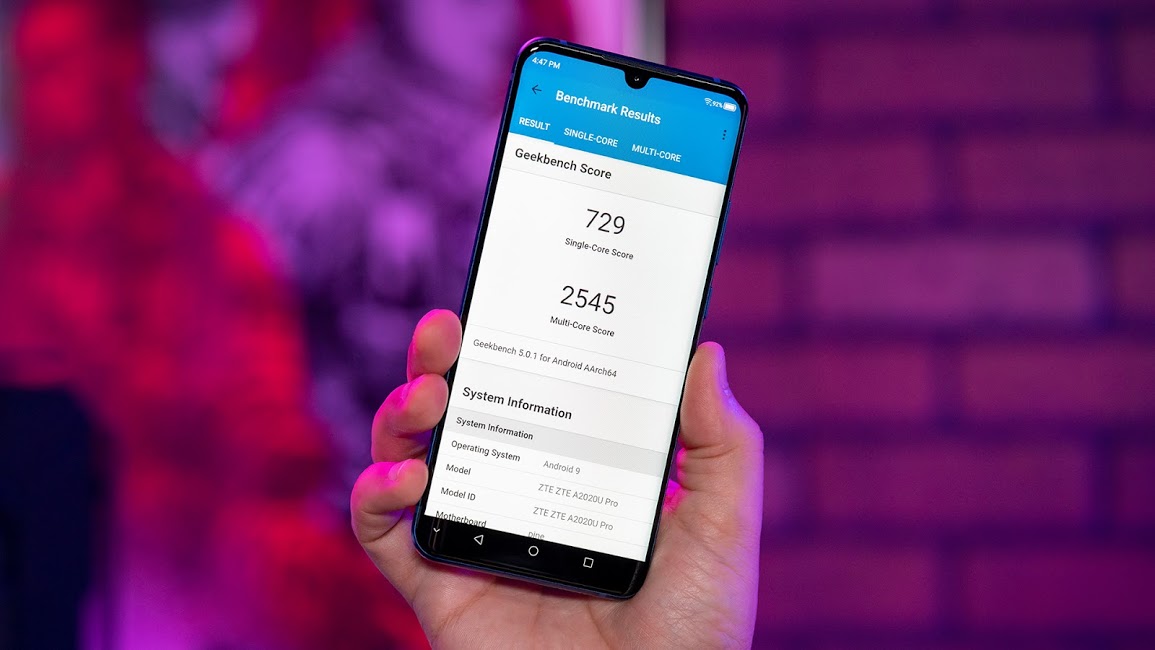
It’s speedy and powerful, and it better be, because Qualcomm has a lot riding on it. It’s the manufacturer’s first 7nm FinFET chip, narrowed down from the 10nm Snapdragon 845, which means more efficiency. It’s also Qualcomm’s first tri-cluster core design, which, in simple terms, just means that there’s one really big core, three big cores, and then four small cores. With so many firsts for Qualcomm, there was a lot to prove with this mobile CPU, and we’re definitely impressed so far.
With this powerful setup, there isn’t a lot the Axon 10 Pro can’t do. We were able to watch video in 4K at 60fps without issue, games ran incredibly well (We tried out Activision’s new Call of Duty Mobile, Eternium, and Bethesda’s The Elder Scrolls: Blades), and the sound was great. We’ll get into the sound later, though, because it deserves its own category.
Physical design
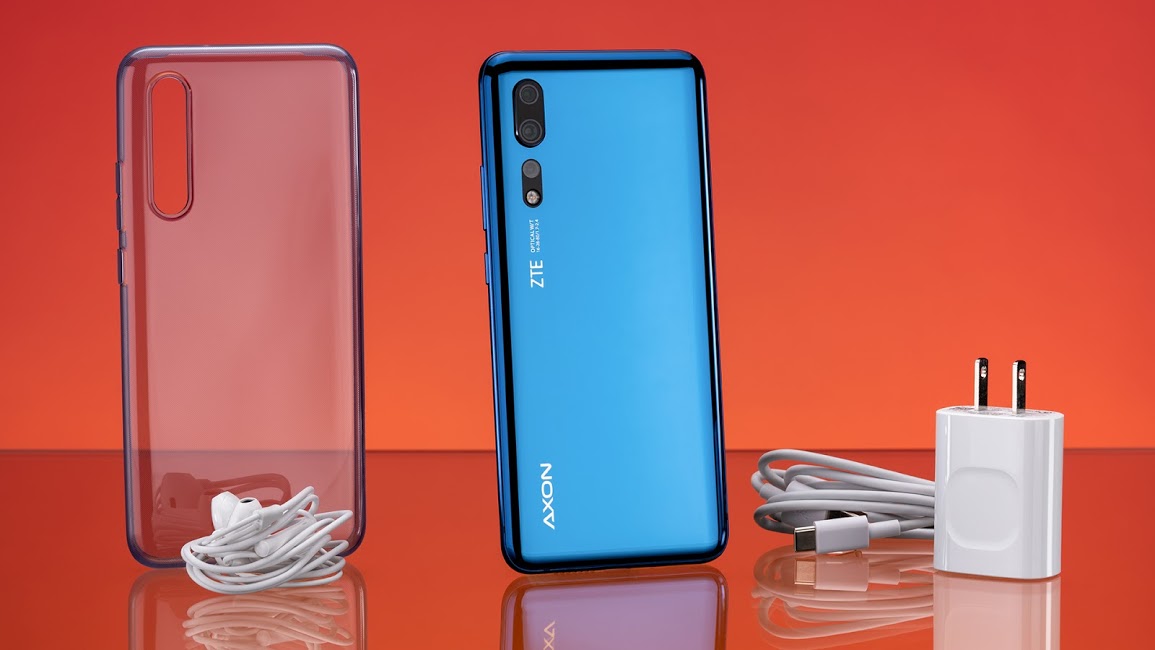 The design of the Axon 10 Pro is interesting, to say the least. While at first glance it may appear like any other smart phone (narrow, dark colors, stretched screen), it gets more unique the longer you look at it. It’s sort of a mix between phone designs from the early 2010s (think first Galaxy and Note models) and phones from 2019. The stretched and curved screen is certainly similar to phones of today, but the deep blue glass back cover and metal frame hearken back to those older models. Of course, back then, phones weren’t quite as sleek and narrow, so it’s still not quite like anything seen back then, either. It looks good, for sure, and stands out from the smartphone crowd.
The design of the Axon 10 Pro is interesting, to say the least. While at first glance it may appear like any other smart phone (narrow, dark colors, stretched screen), it gets more unique the longer you look at it. It’s sort of a mix between phone designs from the early 2010s (think first Galaxy and Note models) and phones from 2019. The stretched and curved screen is certainly similar to phones of today, but the deep blue glass back cover and metal frame hearken back to those older models. Of course, back then, phones weren’t quite as sleek and narrow, so it’s still not quite like anything seen back then, either. It looks good, for sure, and stands out from the smartphone crowd.
Thanks to the slightly curved “3D glass” back cover, as ZTE calls it, the phone feels natural sitting in your hand, and it doesn’t slide around or require any weird angles to hit all corners of the screen. It’s nice. Not flashy or anything extravagant, but nice. Of course, if you’re even considering a $550 phone over an iPhone or Galaxy, you’re probably a little fed up with flashy and extravagant, anyway, and you just want a solid phone that looks and performs well, so that’s probably a good thing. The cameras, being a 48MP triple rear camera and 20MP front camera respectively, hold up against the competition well, too.
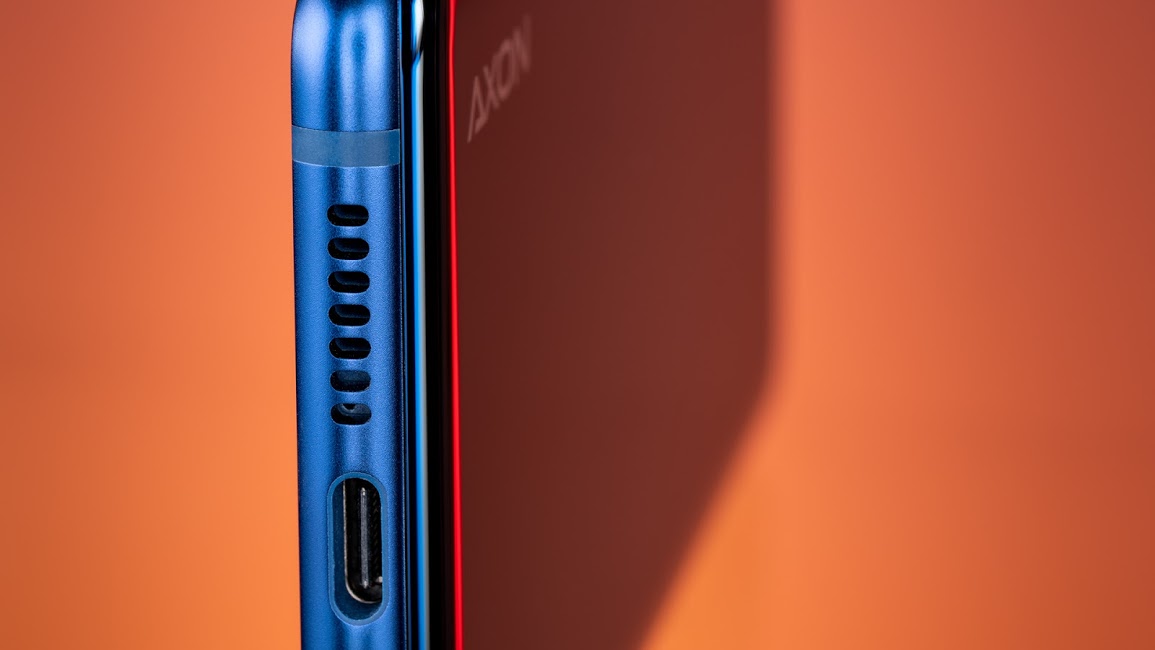
While there’s a lot we like about the phone, it’s not without its shortcomings. The first is that there’s no headphone jack. That’s an increasingly popular phone design trend, though, so maybe I’m just being an old man yelling at the sky for no reason, but I don’t think manufacturers should give up on the headphone jack just yet, especially when it’s a phone like this, which has a bumping sound system. Fortunately, this phone comes with a 3.55mm headphone jack adapter, so you don’t have to go out of your way to spend another $20-$30 on one (Looking at you, Apple). The charging port, which you then need to plug the headphone adapter into to use a corded headset, is USB Type-C. The sound quality holds up nicely when using the adapter, so you don’t have to worry about that.
The last minor complaint I had with the Axon 10 Pro is its wireless charging. It has built-in wireless charging, which is awesome and on-par with competitors, but its built-in wireless charging is quite slow. At the very least, it certainly took a lot longer to charge wirelessly than it did on a cable, but that may have something to do with the USB Type-C jack, which is famously powerful on its own. So we’ll just say this: If you’re looking for fast charging, plug it in, but if you care more about convenience, the wireless charging is still fine, it’s just not spectacular.
Sound
Alright, onto the fun stuff. While the Snapdragon 855 is super zippy and the design is snazzy, the sound, at least to me, is the most impressive feature of the phone. Tested using both a bluetooth headset (Pendulumic Tach T1) and a wired headset using an adapter (HyperX Cloud Revolver S), the sound quality of this phone is very, very high.
Just in case you aren’t familiar with Axon phones in general, their calling card has always been audio. And while I was very nervous to hear that this phone wouldn’t have an audio jack (considering what that might do to the sound quality itself), once we actually had our hands on the phone in the studio, my concerns were mitigated. This phone comes with the DTS:X Ultra audio codec, which is an object-based codec used to create multi-dimensional sound. In other words, it’s fancy surround sound, and it sounds really good even when just listening to music. It’s a similar system to Dolby’s surround sound codec, but it works with more speakers and headsets. This is a home cinema sound system squashed down and jammed into a phone, and I couldn’t be happier about it.
Bass rumbles clearly, highs and lows are vibrant and have sharp contrasts—it just sounds really good. The phone’s dual-speaker setup sounds great, too, but you’ll want a pair of relatively nice headphones to really get the most out of it. Or, at the very least, a Bluetooth speaker.
Software Customization and Features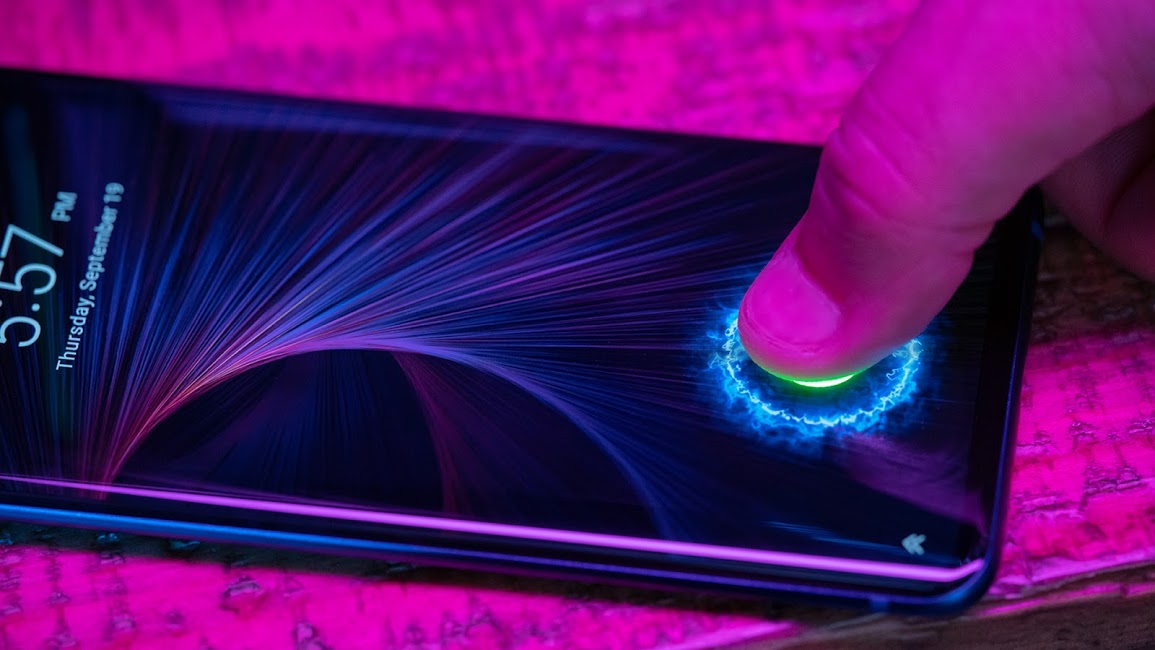
The software features of the Axon 10 are a bit different than any other Android phone, especially the virtual home button and navigation layout function like tabs with a scrolling wheel rather than just simple button-tapping or swiping. If you’re used to things being done a certain way, that may take you some time to get used to, but it’s easy enough once you do.
As this is an Android phone, it comes with all your standard Android apps. The Google Play store for games and utility apps, the full Google suite, Play Music and Movies for your entertainment, and so on. All of that’s simple and recognizable enough if you’re familiar with Android as a whole. The real unique functionality of the Axon 10 comes through with your software settings and personalization, though. Sure, it comes with all of the latest and greatest bits, like face recognition and gesture controls, but there’s more, too.
Two of my favorite rather niche features to use were one-handed mode (great for picking up the phone and navigating through it while working) and the built-in screen recording feature. Recording the screen on this is easier than any iPhone I’ve ever used, because, well, I don’t have to plug it into a computer and open QuickTime to do it. Once you turn the feature on, you just hit the quick setting button, and it starts recording. You can control video quality and touch interaction visibility, too. Pretty useful for any phone-fueled content creators out there. More importantly, using all of these features doesn’t seem to drain battery life faster than normal.
Purchase bundle and protection plan
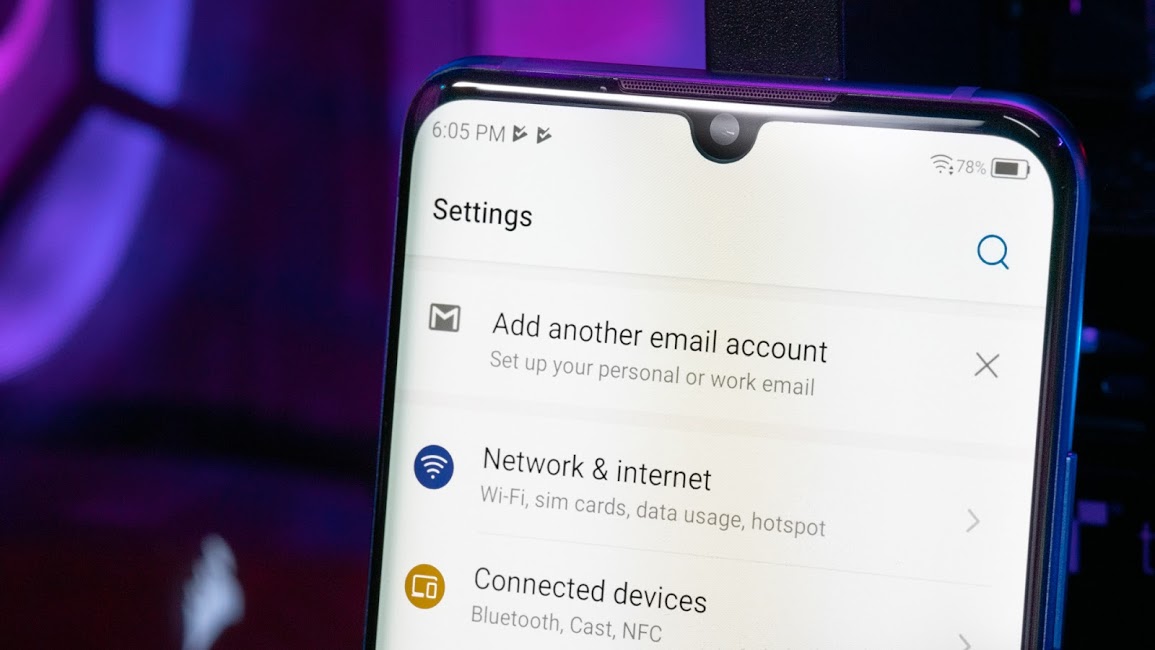
Unlike a lot of popular phones on the market, the Axon 10 does include a protection plan. And, as a very, very cool added bonus, that includes any accidental, drops, or other breakage that damages the LCD screen. You only get one use of that freebie, but for zero insurance premiums, monthly fees, or shipping costs, it’s hard to complain.
On Newegg, as of this writing, you can also get a pair of high quality JBL Reflect Bluetooth headphones for free with your purchase, as well as a wireless charging case for those headphones, items which on their own cost about $130 total. That’s a bunch of free stuff piled onto a phone that’s already a solid value. The only tradeoff of not going with the standard Samsung or Apple models out there is, obviously, support. With fewer customers and less market share as a whole, finding solutions or ideas to some unique problems might be a little difficult, but for a lot of people out there, the value is worth it. With the ZTE Axon 10 Pro, standing out from the crowd comes with a ton of advantages.

